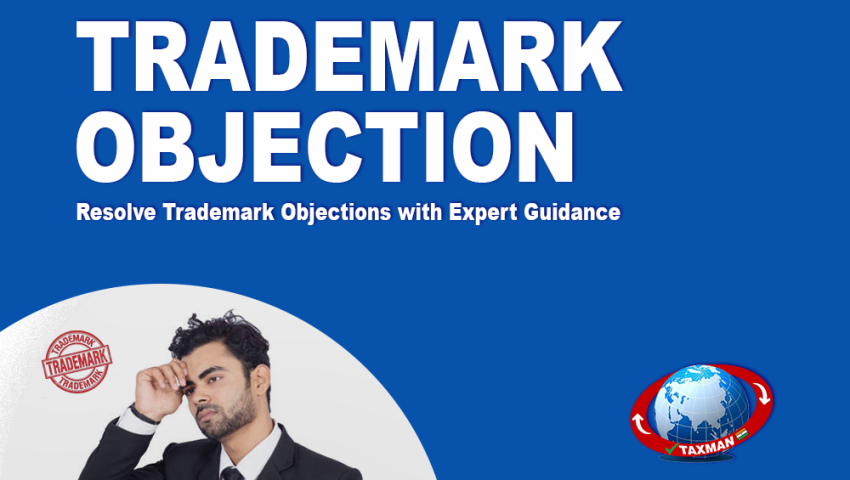
Trademark Objection: Understanding the Process and How to Respond
Trademark registration safeguards your brand, but hurdles like trademark objections are common and must be addressed for approval.
What is a Trademark Objection?
A trademark objection is a formal notification from the Trademark Office stating that there is an issue with your trademark application. The office may have concerns about the distinctiveness, uniqueness, or legality of your trademark. An objection may arise at any point during the trademark examination process, after the application has been reviewed but before the trademark is registered.
Objections are common and do not mean that your application will be rejected automatically. Instead, it provides an opportunity for you to address the concerns raised by the Trademark Office and convince them that your trademark meets all the necessary requirements for registration.
Reasons for Trademark Objection
There are several reasons why the Trademark Office may object to your trademark application. Some of the common reasons include:
1. Similarity to an Existing Trademark
One of the most common reasons for trademark objections is similarity to an existing registered trademark. The Trademark Office checks for trademarks that are already in use or have been applied for and may raise an objection if your trademark is too similar to a pre-existing one in terms of appearance, sound, or meaning.
2. Descriptive or Generic Terms
A trademark must be distinctive and capable of identifying the source of goods or services. If your trademark is too descriptive or generic, it may be rejected. For example, terms like "Best Pizza" or "Fast Delivery" are considered descriptive and cannot be registered as trademarks because they simply describe the nature of the product or service.
3. Lack of Distinctiveness
If your trademark is not unique or distinctive enough to distinguish your goods or services from others, the Trademark Office may object to it. A lack of distinctiveness can occur if your trademark is too similar to common industry terms or symbols.
4. Offensive or Scandalous Marks
Trademarks that are considered offensive, immoral, or scandalous are not allowed to be registered. The Trademark Office may raise an objection if it deems your trademark to be offensive or inappropriate for public use.
5. Non-Compliance with Legal Requirements
A trademark must meet certain legal and procedural requirements, such as proper filing of documents, classification of goods and services, and the submission of clear representations of the trademark. If the application fails to comply with any of these requirements, the Trademark Office may raise an objection.
6. Similarity to a Well-Known Mark
If your trademark is too similar to a well-known mark, the Trademark Office may object to it based on the likelihood of confusion among consumers. Well-known trademarks enjoy additional protection due to their reputation and recognition in the market.
How to Respond to a Trademark Objection
If you receive a trademark objection, don’t panic. You have the opportunity to respond to the objection and address the concerns raised by the Trademark Office. Here’s how to proceed:
1. Understand the Grounds for Objection
The first step is to carefully read the objection notice from the Trademark Office. It will outline the specific grounds for the objection. Understanding the exact reason behind the objection will help you determine how to respond effectively.
2. Seek Professional Assistance
If you are unsure about the objection or how to respond, it is highly recommended to seek the advice of a trademark attorney or an intellectual property expert. They can help you navigate the legal complexities of the objection process and guide you on how to present your case.
3. Amend Your Trademark Application (If Necessary)
In some cases, you may be able to resolve the objection by making amendments to your trademark application. This may involve modifying the design or wording of the mark to make it more distinct, or clarifying the goods or services the trademark covers.
For example, if the objection is based on similarity to an existing trademark, you could consider changing the design or text of your trademark to avoid confusion.
4. Provide a Counter-Statement
If the objection is related to the distinctiveness or descriptiveness of your trademark, you can submit a counter-statement to defend the uniqueness of your mark. This may involve providing evidence that shows your trademark has acquired distinctiveness in the market or explaining why it does not resemble any other trademarks.
For example, if your trademark is being objected to on the grounds of descriptiveness, you can argue that your mark has become widely recognized and associated with your brand through marketing efforts, advertising, or use in commerce.
5. File an Appeal (If Necessary)
If the objection is not resolved through an amendment or counter-statement, you can file an appeal with the Intellectual Property Appellate Board (IPAB). An appeal allows you to present your case before a higher authority and argue why your trademark should be registered.
6. Wait for the Trademark Decision
After you have submitted your response to the objection, the Trademark Office will review your arguments and decide whether to accept your trademark or maintain the objection. If your response is successful, your trademark will proceed to the next step in the registration process. If the objection is upheld, you may be required to modify your trademark or reconsider your application.
Raushan Kumar
Leave a comment
Your email address will not be published. Required fields are marked *
